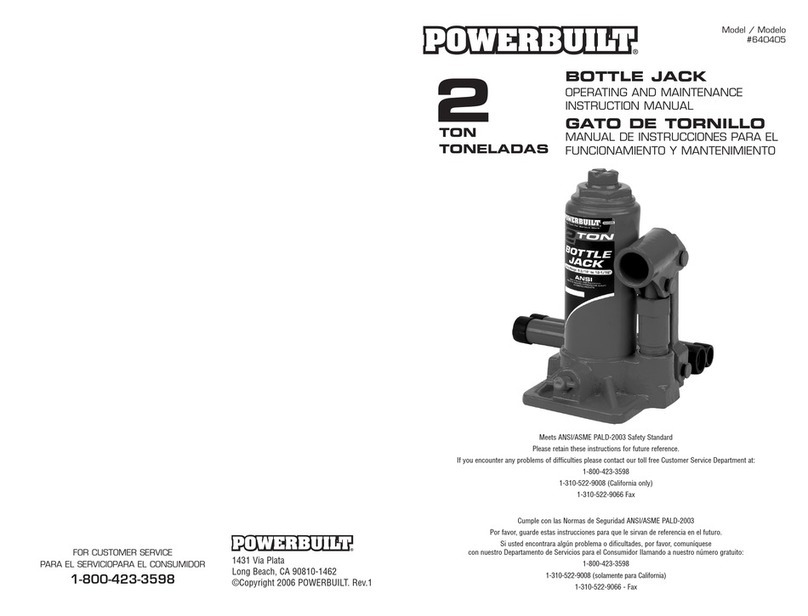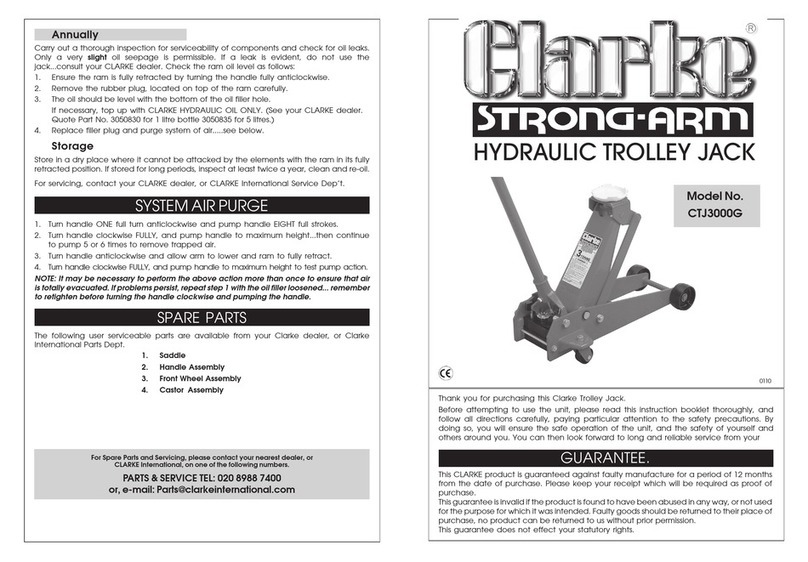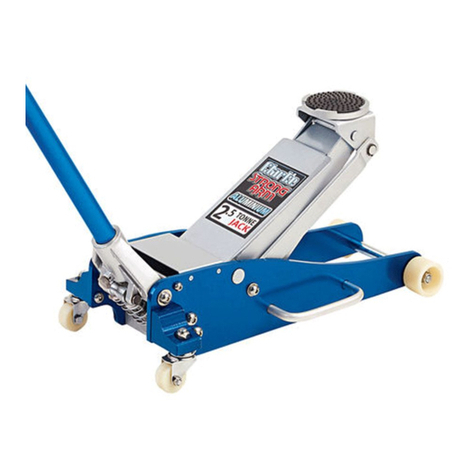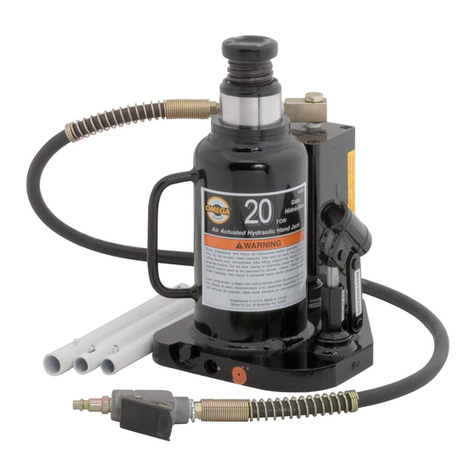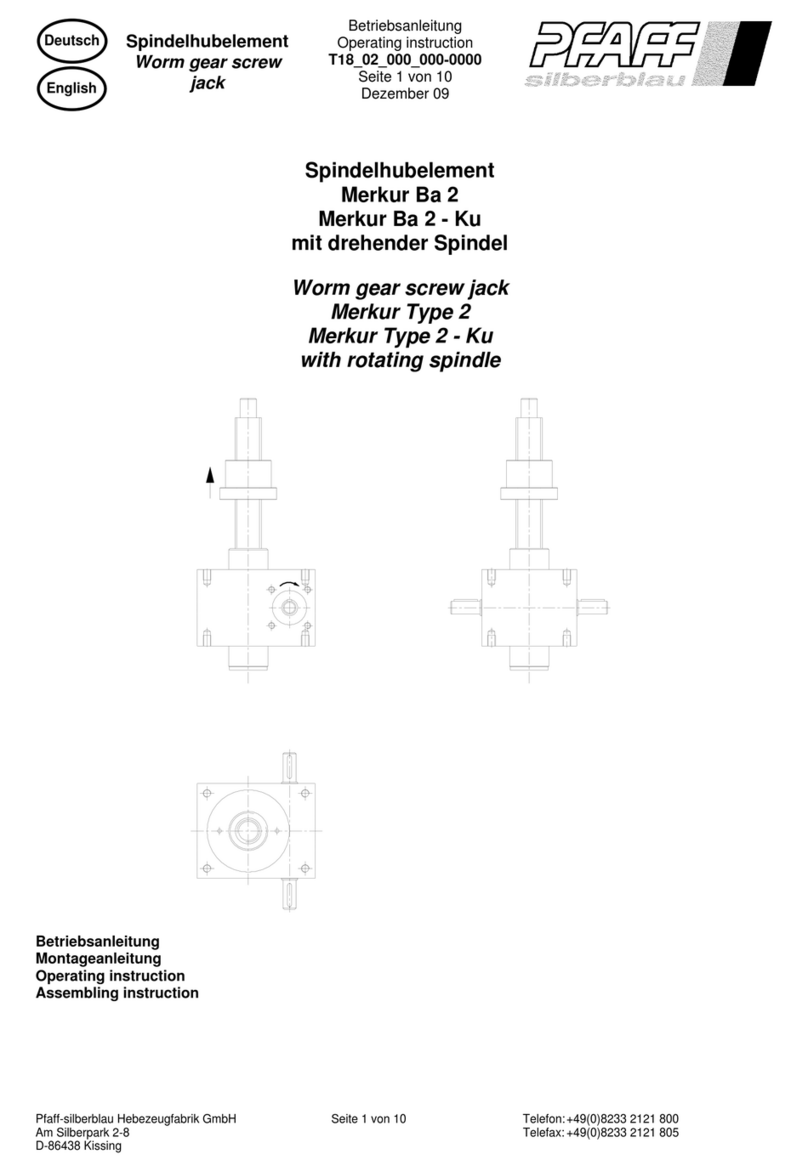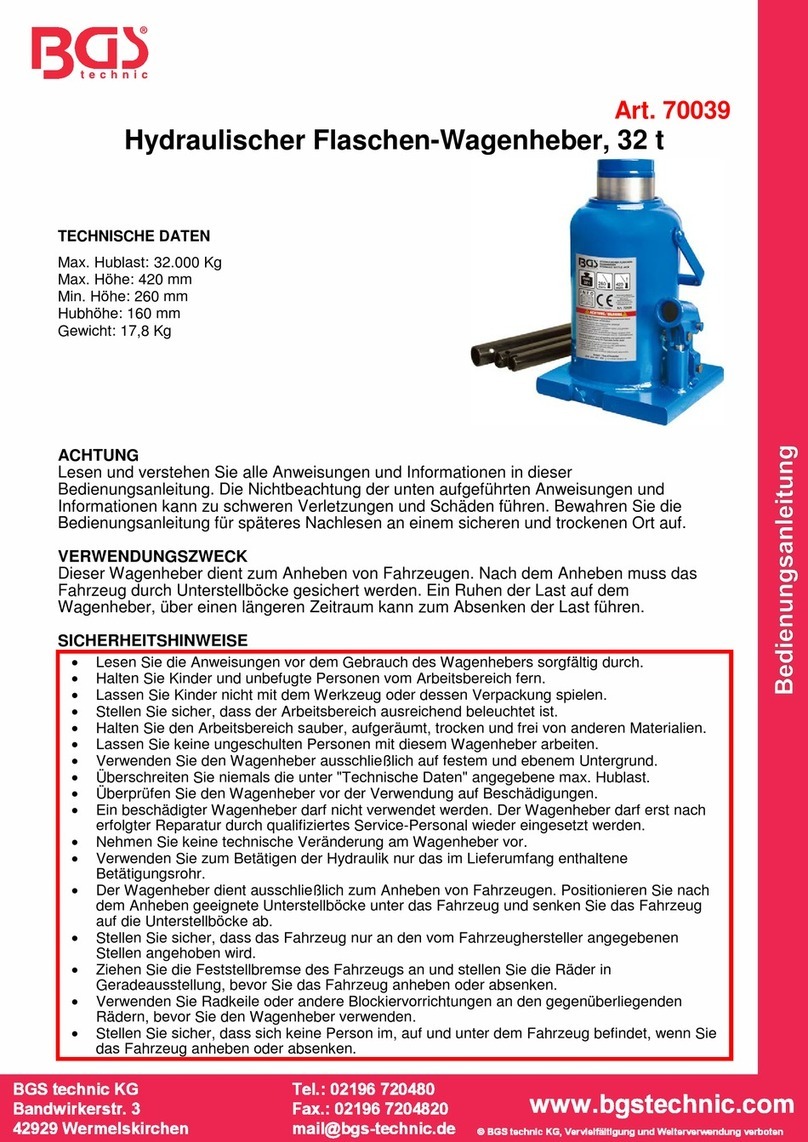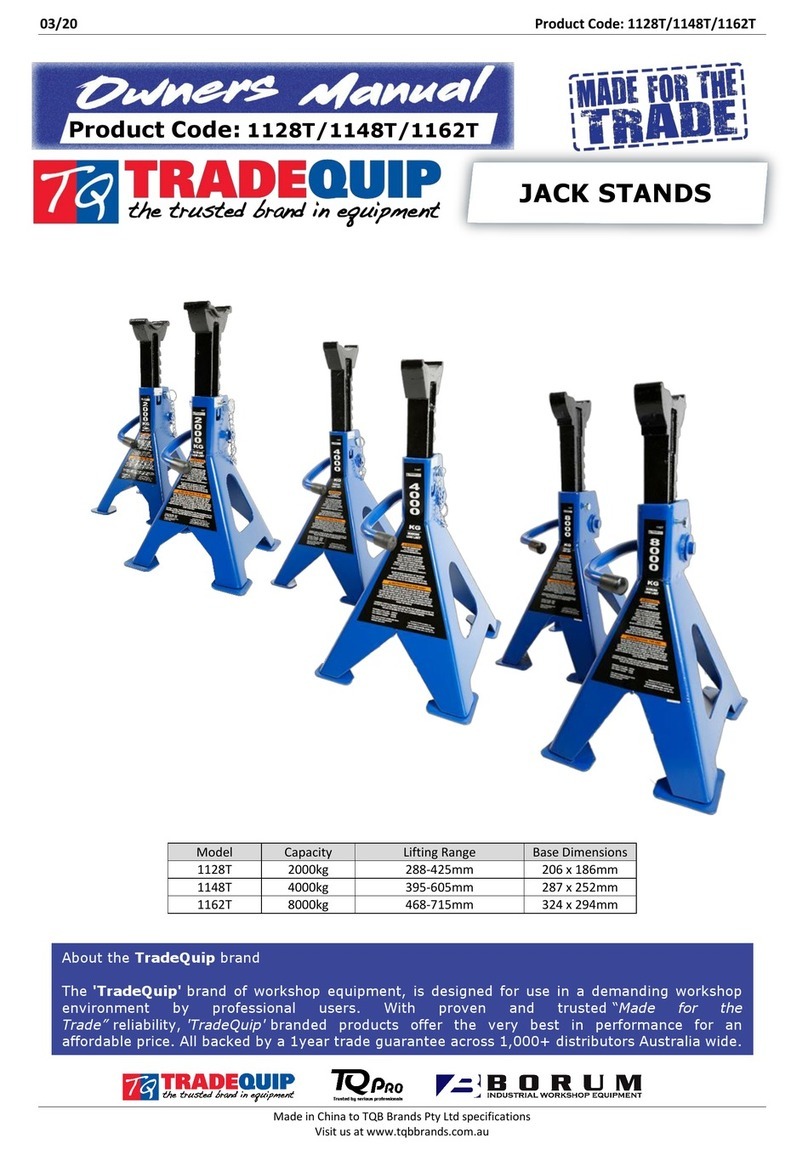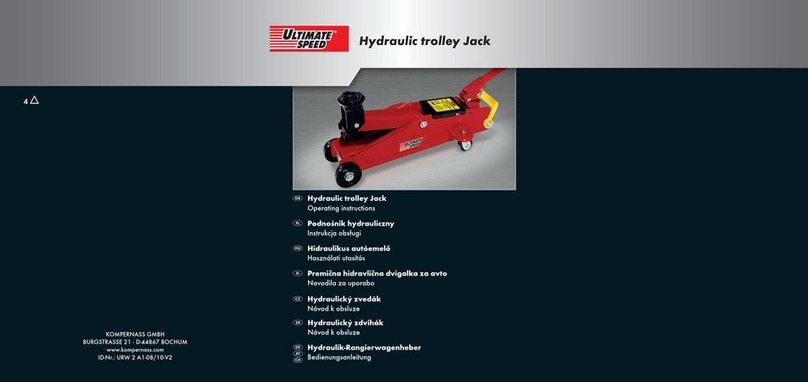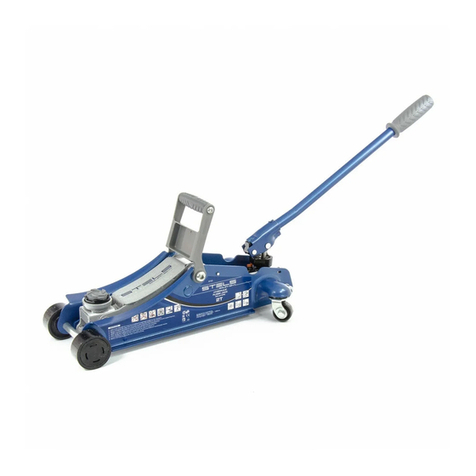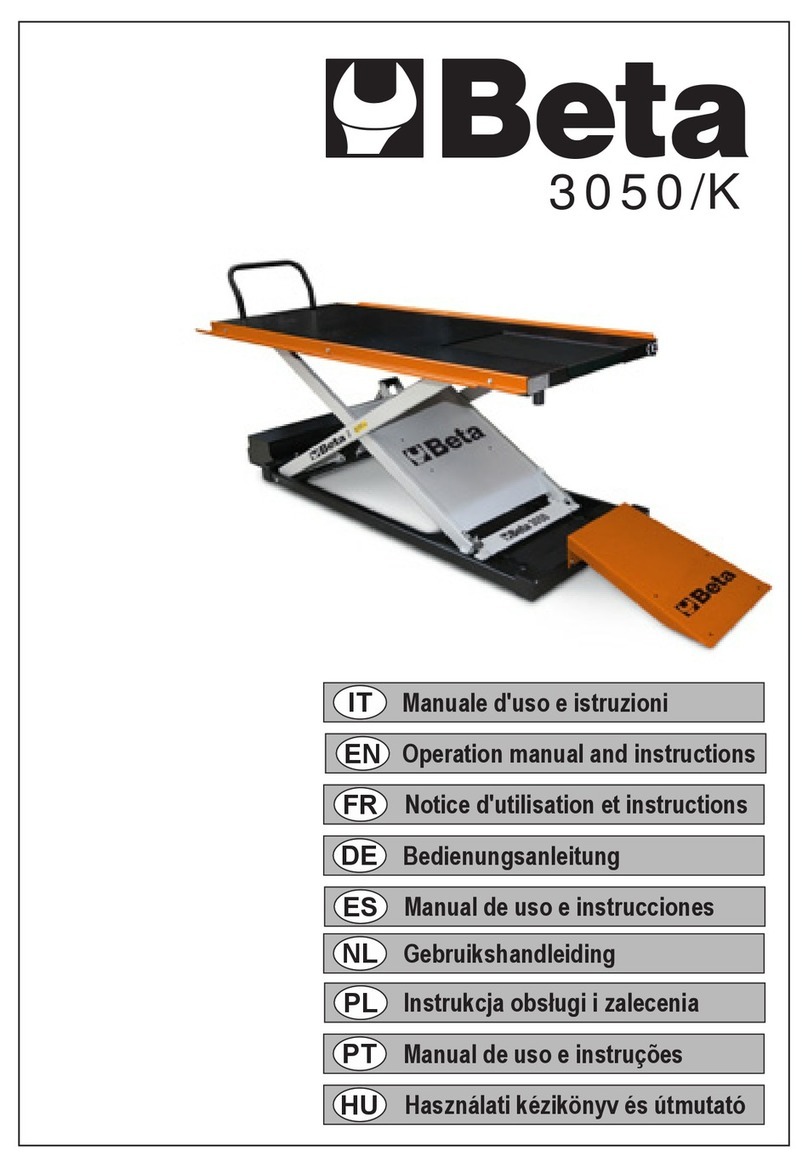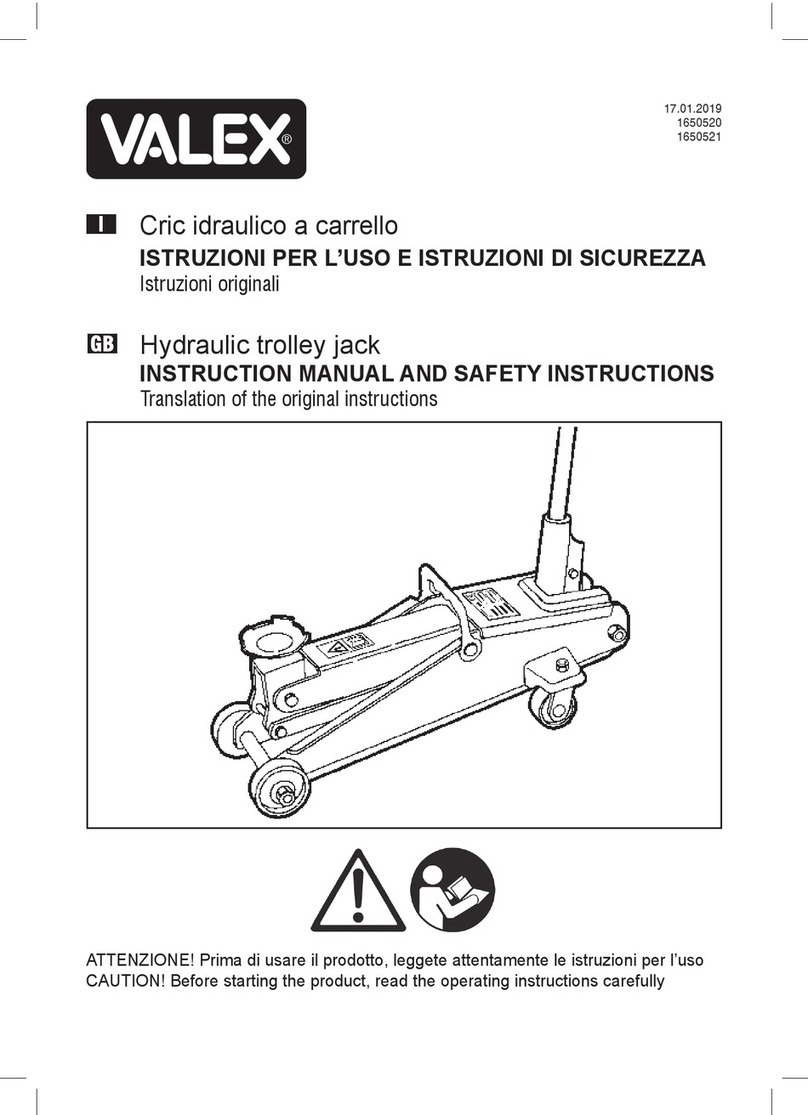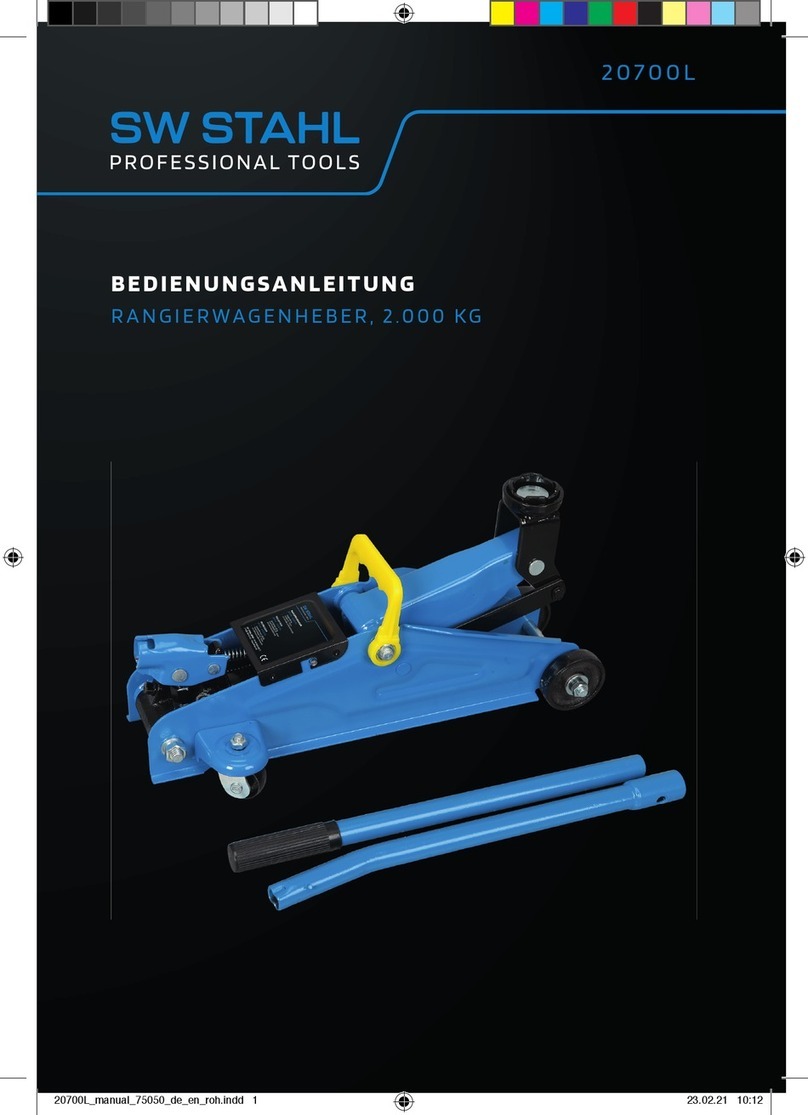
handle from the upright position. Hold the handle firmly and
pull the lifting mechanism up and position it completely and
securely under the load to be lifted. The jacks ratcheting lifting
mechanism allows the lifting jaw to raise without pumping
the handle.
START LIFTING:
Holding the handle firmly with both hands pump the handle
in an up and down motion. The high lift jack has a ratchet-style
handle which in the lift mode will claw the lifting mechanism
up the teeth on the lifting bar with every downward movement
of the handle. It has a long handle allowing you plenty of lev-
erage for lifting the vehicle. Do NOT use any attachments to
extend the length of the handle. Keep watching the jack and
load being lifted stop lifting if either the jack or load begins
to move. Once at desired height is reached place a 13mm bolt
(not included) through the hole in the lifting bar immediately
below the lifting mechanism.
STABILISE THE LOAD:
Do NOT use the jack to support the load, use accessories such
as vehicle support stands that are rated greater than the load
being lifted to support the load. Lower the jack onto the sup-
port stands and remove the High Lift Jack.
LOWERING THE LOAD:
IMPORTANT The High Lift Jack MUST have a minimum load of
50kg on it to lower step by step otherwise the lifting mecha-
nism will slide down to the base dropping your vehicle.
Before you move the control lever to the down position
place the handle upright against the lifting bar. When lower-
ing the weight of the load pushes up against the jack handle.
If the jack handle is in the horizontal position when the
control lever is moved to the lowering position it may fly
up and cause serious injury.
With the handle locked in the upright position move the
control lever to the down position. Holding the handle
firmly with both hands pump the handle in an up and down
motion. The high lift jack has a ratchet-style handle which in
the lowering mode will claw the lifting mechanism down the
teeth on the lifting bar with every upward movement of the
handle.
USING THE HIGH LIFT JACK TO WINCH
Do NOT overload the top clamp of the high lift jack as it may
cause the clamp to bend or break resulting in serious injury or
death.
Use only correctly rated shackles, chains, cables or extension
straps that have a greater working load limit or breaking
strength than the Jack. Apply air breaks such as a recovery
blanket or dampener to the chains, cables or straps.
PLAN YOUR RECOVERY:
KEEP WINCHING AREA CLEAR:
Do NOT allow people to remain in the area during winching
operations, it is recommended 1.5 times the length of the
longest Chain, cable or straps should remain clear. Do not
step over a taut recovery lines or allow anyone else to do so.
Due to the possibility of it breaking, direct all people to stand
clear of any possible pathways. A snapped line could cause
serious injury or death. Keep proper footing and balance at
all times. Do not reach over or across the jack and pull cable
while in operation.
SAFETY:
Wear appropriate clothing and safety gear, such as leather
gloves, long sleeve shirt and pants, closed in shoes. If you are
going to be performing a recovery in the sun wear a hat and
sunscreen to protect yourself from the suns UV rays.
WORKING AREA CONDITIONS:
Keep the working area well lit. Keep children away from working
area, never let children operate the jack. Ensure no persons
SETTING THE CLAMP:
Loosen the top clamp nut and bolt and rotate the clamp so
that it is in line with the lifting bar.
CONNECTING THE JACK TO AN ANCHOR POINT:
Select the most appropriate anchor point. Anchor points
must be strong enough to withstand the forces applied. Once
you have selected the anchor point use correctly rated recov-
ery equipment to attach the chain, strap or cable recovery
line. Securely attach the other end of the recovery line to the
jack’s lifting jaw. Apply an air break such as a recovery
blanket or damper mid way down the line.
CONNECTING TO LOAD:
Connect the chain, strap or cable to the top clamp of the jack,
if the recovery line does not connect to the clamp safely use
a shackle. Attach the recovery line to the load. Apply an air
break such as a recovery blanket or dampener mid way down
the line.
We do not recommend the use of this jack as a winch for your vehicle. It should only be
used as an aid for winching obstacles from your vehicles path.
Check your surroundings; ensure all spectators are well clear of
the area. Select and prepare all the accessories needed. Check
the condition of the jack and accessories before commencing.
Do NOT use the jack or any accessories if they show any signs
of damage.
POSITION THE JACK:
Make sure the control lever is in the up position. Unlock the
remain inside the vehicle.

